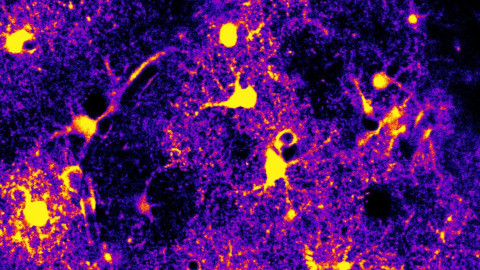International consensus to spur the study of astrocytes in diseases of the nervous system

ICREA researcher from the Institut de Neurociències Elena Galea has led a study, published in Nature Neuroscience, in which more than 80 international scientists have worked collectively to clarify definitions, nomenclatures, controversies, and upcoming goals in astrocytes research. A theoretical breakthrough that will accelerate the acquisition of knowledge about the involvement of these cells in diseases of the central nervous system.
16/02/2021
Spanish scientist Ramon y Cajal discovered that astrocytes, cells responsible for an optimal brain environment so that all functions can be performed, change shape when there is an infection, injury, or disease of the central nervous system. More than a hundred years later, many doubts are still unsolved about the implications of these morphological changes and the role astrocytes play in central nervous system diseases.
Research in this field has accelerated in recent years, with new researchers providing new techniques, approaches, and hypotheses. Therefore, some experts have considered an urgent need to unify the nomenclature used and refine the concepts: many terms related to astrocytes have been understood in different ways by different experts.
An international team of researchers has agreed upon guidelines and nomenclatures. Elena Galea, ICREA researcher at the INC-UAB and a member of the Consolidated Research Group of Dementias at the Hospital de Sant Pau, together with Carole Escartín, professor at the University of Paris-Saclay; Michael V. Sofroniew, of the University of California, and Alexei Verkhratsky, of the University of Manchester, have worked on a consensus document, approved by more than 80 experts and published in Nature Neuroscience. "Reaching such a large agreement has taken a year of work, in which circles of revision and discussion of the text have been established, under our coordination", explains Elena Galea.
The study unifies all the names that refer to reactive astrocytes, reviews the laboratory techniques currently in use, and dispels false myths, such as the existence of ‘good’ and ‘bad’ astrocytes. It also proposes a paradigm change, focusing preferably on the analysis of molecular and functional alterations, instead of morphological ones, as has been the case so far.
"Currently, most of the treatments for nervous system diseases are targeted to neurons. This work is essential because it will stimulate international collaborations, and promote cutting-edge molecular techniques and statistical analysis to understand astrocytes’ functions in brain circuits. We also want to determine astrocytes’ involvement in central nervous system diseases and address unexplored therapeutic niches, such as therapies targeting astrocytes”, concludes Dr. Galea, who expresses her gratitude to the INc, in particular to its Biochemistry Unit, “for their unwavering faith in my scientific capabilities, which have facilitated that, for the first time, a member of the INc signs an article in Nature Neuroscience as a corresponding author.”
Article: Escartin, C. Galea, E. et al. Reactive astrocyte nomenclature, definitions, and future directions. Nature Neurosciences (2021). DOI 10.1038/s41593-020-00783-4